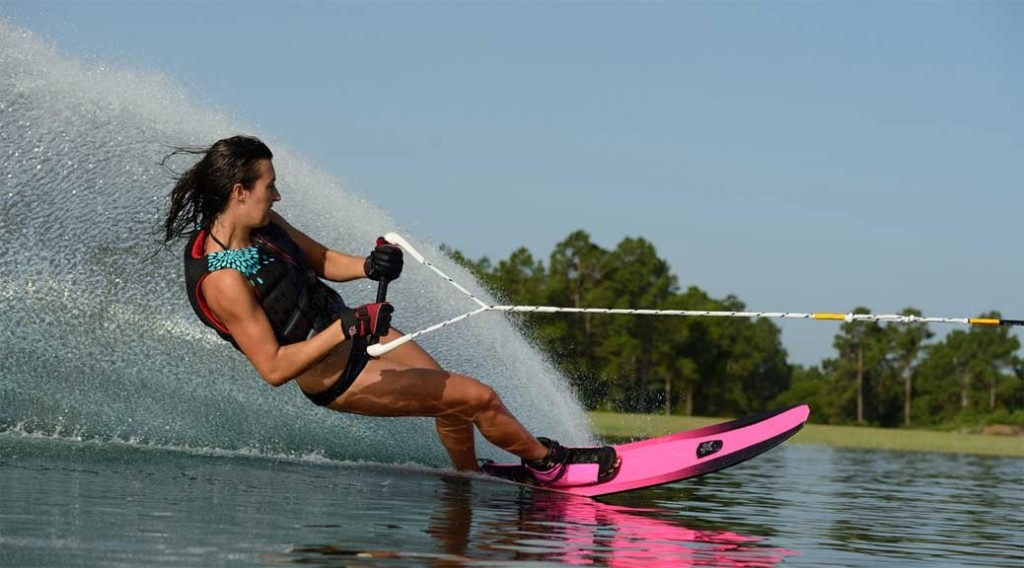How to Waterski
It Feels Like Home!

How to Waterski: A Beginner's Guide!
How to Waterski, waterskiing is a thrilling water sport that combines skill, strength, and balance. Whether you’re a beginner or looking to improve your technique, this guide will walk you through the basics of waterskiing, from getting started to refining your skills.
Equipment You Need
Waterskis:
- Combo Skis: Ideal for beginners, these skis are wider and offer better stability.
- Slalom Skis: Used for advanced skiers, these are single skis designed for more speed and maneuverability.
Ski Rope and Handle:
- The rope should be sturdy, with a comfortable, non-slip handle.
Life Jacket:
- A well-fitted, Coast Guard-approved life jacket is essential for safety.
Boat:
- Ensure the boat is suitable for waterskiing, with enough power to pull skiers. It should have a tow point and a driver who is experienced with towing skiers.
Getting Started
1. Choosing the Right Location:
- Find a calm, open body of water with minimal boat traffic and waves.
2. Preparing to Ski:
- Stretching and Warm-up: Perform a few stretches to loosen up your muscles.
- Fitting the Skis: Put on your waterskis while in the water. The skis should fit snugly but not too tight.
3. Starting Position:
- Floating Position: Start in the water with your skis on. Keep your knees bent and close to your chest, with the ski tips pointing out of the water.
- Hold the Handle: Grip the ski handle with both hands, keeping your arms straight and relaxed.
Getting Up on the Skis
1. Communication with the Boat Driver:
- Agree on hand signals for “go,” “stop,” “faster,” and “slower” to ensure clear communication.
2. The Takeoff:
- Signal Ready: Give the signal to the boat driver when you’re ready.
- Maintain Position: Keep your knees bent and arms straight. The boat will start to move slowly.
- Gradual Acceleration: As the boat speeds up, let the boat pull you up. Don’t try to stand up too quickly.
- Standing Up: Once you feel stable and the boat is moving at a consistent speed, begin to straighten your legs slowly. Keep your weight centered over the skis.
Staying Up and Skiing
1. Body Position:
- Relax: Stay relaxed but firm. Keep your knees slightly bent to absorb any waves.
- Lean Back Slightly: Maintain a slight backward lean to counteract the boat’s pull.
- Arms Straight: Keep your arms straight and low, close to your hips.
2. Steering and Balance:
- Turning: Shift your weight gently to steer. Lean to the left to turn left and to the right to turn right.
- Balance: Focus on maintaining your balance. If you start to fall, let go of the handle to avoid injury.
Stopping and Falling Safely
1. Signaling to Stop:
- Use the agreed-upon hand signal to indicate to the boat driver that you want to stop.
2. Controlled Fall:
- If you feel yourself losing balance, let go of the handle and try to fall sideways or backward to avoid injury.
3. Getting Back Up:
- Swim back to the skis and the handle. Position yourself for another start if you’re ready to go again.
Advanced Techniques
1. Crossing the Wake:
- Approach: Gain speed and approach the wake at a slight angle.
- Absorb Shock: Bend your knees slightly more as you cross the wake to absorb the impact.
- Regain Balance: Once over the wake, straighten your knees to regain balance.
2. Slalom Skiing:
- For advanced skiers, practice skiing on one ski. Start by dropping one ski after getting up and shifting your weight onto the remaining ski.
Safety Tips
- Always Wear a Life Jacket: Safety first. Never ski without a life jacket.
- Use a Spotter: Have someone in the boat to act as a spotter, communicating between you and the driver.
- Check Equipment: Regularly inspect your equipment for wear and tear.
- Know the Signals: Make sure everyone understands the hand signals for clear communication.
How to Waterski, waterskiing is a fun and exhilarating sport that can be enjoyed by people of all ages. By following these steps and practicing regularly, you can improve your skills and enjoy the thrill of gliding across the water. Always prioritize safety and communicate effectively with your boat driver and spotter to ensure a great waterskiing experience.
